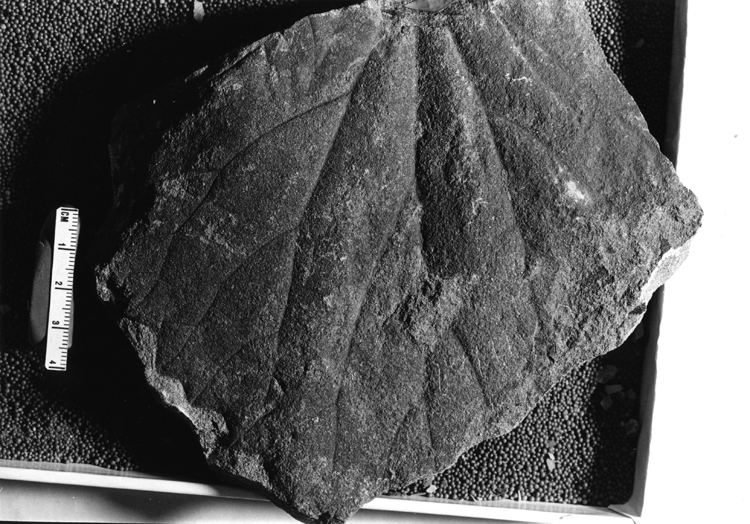Locality
From Hollick (1930) (p. 115)
"Yukon River, north bank, sandstone immediately below Pickart's mine (original No. 3AH18b); collected by Arthur Hollick and Sidney Paige in 1903 (lot 3255)."
Description
From Hollick (1930) (p. 115)
"Size and shape of leaf not known, apparently about 19 centimeters in length by 18 centimeters in width, narrowed above to a wedge-shaped apex (?); margin coarsely and obtusely crenate; nervation subpalmate, craspedodrome; midrib somewhat flexuous; secondary nerves few in number, widely spaced, alternate, ascending, the upper ones forked toward their extremities, the lower ones with forking branches from their under sides, the lower branches forked in a similar manner."
Remarks
From Hollick (1930) (p. 115)
"This imperfect specimen apparently represents a leaf that may be compared with the general type of Viburnums with broadly ovate or rhomboidal outline and palmate or subpalmate nervation. It is much larger than any fossil species with which it may be satisfactorily compared, but, except for its larger size, it is suggestive of Viburnum crassum Knowlton (1917) (p. 277, l. 52, figs. 3, 4) from the Vermejo formation of northeastern New Mexico. In the description of this species Knowlton describes the apex as "apparently truncate * * * but with apparently about five low, broad, obtuse lobes." A careful examination of his Figure 3, however, indicates that these apparent characters may be due, at least in part, to imperfection of preservation. In any event the marginal inequalities are in the nature of crenations rather than lobes, and the margin might be more accurately defined as lobocrenate rather than lobed."
